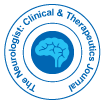Genetic Influences on Seizure Disorders an MRI Analysis of Structural Focal Epilepsy Etiology
Received Date: Nov 01, 2024 / Published Date: Nov 30, 2024
Abstract
Seizure disorders, particularly focal epilepsy, are often associated with underlying structural abnormalities in the brain, which can be visualized using magnetic resonance imaging (MRI). While acquired factors are well-documented in the etiology of focal epilepsy, recent research has highlighted the role of genetic influences in the development and progression of these disorders. This study examines the hereditary patterns of seizure disorders in patients with MRIcharacterized structural focal epilepsy, aiming to identify genetic factors that may contribute to the onset and recurrence of seizures. Through a combination of genetic screening, clinical assessment, and MRI findings, we explore how inherited factors interact with structural brain abnormalities, potentially offering insights into the pathophysiology of epilepsy. Our findings suggest that genetic predisposition plays a significant role in some forms of focal epilepsy, particularly in cases where MRI imaging reveals structural lesions such as cortical malformations, hippocampal sclerosis, or tumors. This research emphasizes the importance of genetic screening and personalized treatment approaches for individuals with structural focal epilepsy, improving diagnostic accuracy and therapeutic outcomes.
Share This Article
Open Access Journals
Article Tools
Article Usage
- Total views: 273
- [From(publication date): 0-0 - Apr 07, 2025]
- Breakdown by view type
- HTML page views: 113
- PDF downloads: 160
